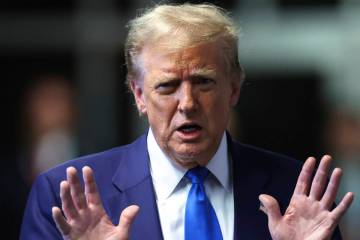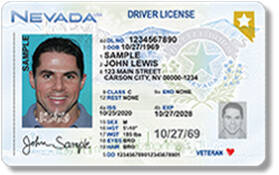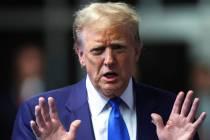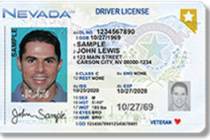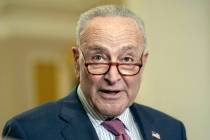Health savings account popularity will likely continue to rise
It has taken some time for the health savings account concept to catch on. But with upcoming health care policy changes and consumer and business owner mindset shifts, some say the scenario of an account paired with a qualified high-deductible health insurance plan may well be the wave of the future.
Health saving accounts were established in 2003 by the Treasury Department to give people on high-deductible insurance plans the opportunity to enjoy a tax advantage on dollars they set aside for medical expenses. That untaxed money can then be used for qualified health expenses under the Internal Revenue Service codes.
Examples of qualified medical expenses include: doctor visits, nonelective medical procedures, psychological services, eyeglasses, dental treatment, among other services and products. Most, but not all, over-the-counter drugs are not considered qualified expenses.
Health saving accounts have climbed to $18.1 billion in assets, representing more than 9.1 million accounts, a 29 percent jump from fiscal year 2012 to 2013, according to investment research firm Devenir. The average account balance is $1,981, up 5 percent from last year, according to the report.
Drivers of change
For decades, the medical consumer has taken a low maintenance approach to health care. Under a low-deductible health care plan, copays are low for doctor visits, prescriptions or lab fees — usually $10 or $20. Of course, all of this comes at a price.
Low-deductible plan premiums can sometimes cost twice as much, or even more than high-deductible plans, said Chris Cochran, an associate professor and chairman of the University of Nevada, Las Vegas’ health care administration and policy department. So more people opting for a lower-cost, higher-deductible plan (deductibles range from about $1,500 annually for an individual to upward of $6,000 for a family), with the added assurance of setting a little tax-free money aside should medical care needs arise, makes sense on the surface.
The thinking behind creating the health saving accounts is that the person who chooses a qualified, high-deductible plan with a low premium but high out-of-pocket, upfront cost will be inclined to sock away some of that premium savings tax-free into an interest-bearing account that can be tied to an investment fund. That money will then be there when he or she, or the family, need medical care.
There are caps for how much in pretax dollars a person or family can set aside. For 2013, individuals can set aside up to $3,250 in their health saving accounts. That number climbs to $3,300 in 2014. For families, the figures are $6,450 for 2013 and $6,550 for 2014.
If you’re over 55, you can contribute an additional $1,000 a year in catch-up contributions. You must also be under age 65 to qualify for a health savings account.
Jeff Bakke, chief strategy officer of Evolution 1, a technology service provider for health saving and flexible spending account-holders, refers to health saving accounts as a “triple tax advantage.” Deposits are not taxed, interest earned goes untaxed and withdrawals, provided they are for qualified health expenses, also go untaxed.
Bakke even sees more people holding onto their health saving accounts into retirement age, even though they can no longer contribute to them after the age of 65. After retirement, the funds are still not taxed if used for medical services.
“It’s good to have a nest egg so you’re not burning through retirement,” Bakke said.
The health saving account’s climb in popularity has been met with the decline in popularity of the flexible savings account. Although there’s more flexibility in how you can spend flexible saving dollars, it’s a use-it or lose-it scenario each year, whereas health saving accounts roll over year after year if funds go unused.
Cochran says more and more employers are moving to qualified, high-deductible insurance plans, and some are even willing to contribute to employees’ accounts because of the overall cost savings on their end.
“When it comes to popularity, high-deductible plans are not better plans, but they’re popular because they’re more affordable plans,” he said.
A recent survey from Towers Watson/National Business Group on Health indicated 66 percent of large companies (defined as 1,000 employees or more) offered at least one qualified, high-deductible plan this year. The survey indicates that number will grow to 80 percent next year.
Consumer mindset
Ruby Warthan-Vance, a group benefits broker with Orgill/Singer and Associates, a Las Vegas-based full-service independent insurance agency, said health saving accounts are becoming more popular in Nevada today than, say, five years ago.
More consumers are seeing that with a low-deductible plan, the consumer pays the insurance company up front, regardless of whether the service is used or not, Warthan-Vance said. For those who rarely go to the doctor, paying a lower premium and having untaxed money set aside in a health saving account may save money in the long run.
Warthan-Vance said the move requires a shift in thinking about health care spending. When shopping for phones or car tires, for example, consumers are research savvy, she said. When working with a high-deductible plan and health saving account, the same attention to detail is needed.
“It’s just kind of taking that bold step and being open-minded, being more engaged in your health care, deciding whether you should go to urgent care or a walk-in clinic. Should you use generic or brand name for a prescription? … It makes you an active consumer interested in the cost of your care.”
Chris Wilcox, a CPA and shareholder with Johnson Jacobson Wilcox CPAs, is hearing less about health saving accounts from his clients, but thinks that should change. The accountant works almost exclusively with business owners, and says health saving account benefits could help both the employer and employee.
“It might be one of the more underutilized vehicles out there to help businesses control health care costs,” he said.
Wilcox says there is likely some resistance to change, as not worrying about health care costs has long been the norm. And some employers may be resistant to contributing to an employee’s health saving account.
But like Warthan-Vance, Wilcox said there is no question, when a consumer is forced to scrutinize his or her own health care dollar, money will be saved. A 2012 study by research firm, RAND Corp. found that consumer-directed health coverage like health saving accounts combined with qualified high-deductible plans saw a savings of 21 percent. If half of U.S. employees in employer-sponsored plans had such coverage, health care costs could drop by as much as $57 billion, the report estimated.
“If I have my money in an HSA, I’m not going to waste it by just going to the doctor for the sniffles. I’m going to be a little more cautious with my health care dollar,” Wilcox added.
Bakke said groups such as unions who have historically had rich benefits packages could likely be later adopters of health saving accounts and qualified high-deductible plans, whereas small businesses who have to offer a minimum coverage option may be more inclined to embrace them. The expert also said although not all employers contribute to an employee’s account, the move spurs more employees to open an account.
“If the employer starts with just $50, it’s a dramatic swing as far as buy in. When you do that it’s like two to four times the accounts opening,” he said.
And even if an employer may not contribute to a health saving account or even offer an enrollment option, if the business owner offers a high-deductible plan that is health saving account-qualified, an employee can enroll in one on his or her own, Bakke said.
Chronic conditions … health care reform
Cochran said most people on high-deductible plans are unlikely to reach their deductible unless a major medical event happens. But sometimes those with chronic conditions who need medicine for on-going treatment may be more predisposed to a major medical event.
Like other brokers and insurance experts, Warthan-Vance advises clients to closely analyze health care needs for any given year and be frank about what they can or can’t handle financially in the event of a major medical situation.
“You have to measure your out-of-pocket exposure,” she said. “You have to think ‘What am I comfortable with?’”
The average out-of-pocket maximum is less than $7,500 for high-deductible plans, according to the Kaiser/HRET 2012 Employer Health Benefits Survey. The same report indicated about $2,700 in medical costs were saved per family for a year, when using consumer-directed options such as health saving accounts with qualified high-deductible plans.
“If you’re young and in good health, I think you should take advantage of a high-deductible plan (and health saving account),” Cochran added. “At some point you’re going to need the money. But the money can grow. … And if you’re a good income earner and understand that health care costs are going up, health saving accounts may make a lot of sense for you too. … Even after retirement, Medicare gaps can get expensive.”
Initial concerns with the Affordable Care Act were that insurance exchanges — such as the Silver State Health Insurance Exchange, which offer four plans ranging from platinum (lower deductible) to bronze (higher deductible) — did not offer a health saving account option. But early indications are that bronze or silver level plans fall within the parameters of being qualified, and as Bakke noted, a person or family can contribute to an account on their own.
More and more experts say with many businesses now needing to offer some sort of coverage, high-deductible plans will obviously become more attractive. With higher numbers of people possibly opting for them, along with health saving accounts, this could create upward pricing pressure on low-deductible plans, said Cochran, possibly making them unaffordable in the future.
But the ultimate problem for those shopping the state’s insurance exchange may be a lack of understanding of how the high-deductible plans work, Cochran said. Often, those who can’t afford insurance are the ones attracted to a high-deductible plan, ignoring the possible need for a health saving account pairing to help with costs.
“In the case of low-income individuals and families, they can’t even contribute to an HSA, and can only afford the high-deductible plan. The extent to which they can participate in the HSA is going to be in question,” he said.





